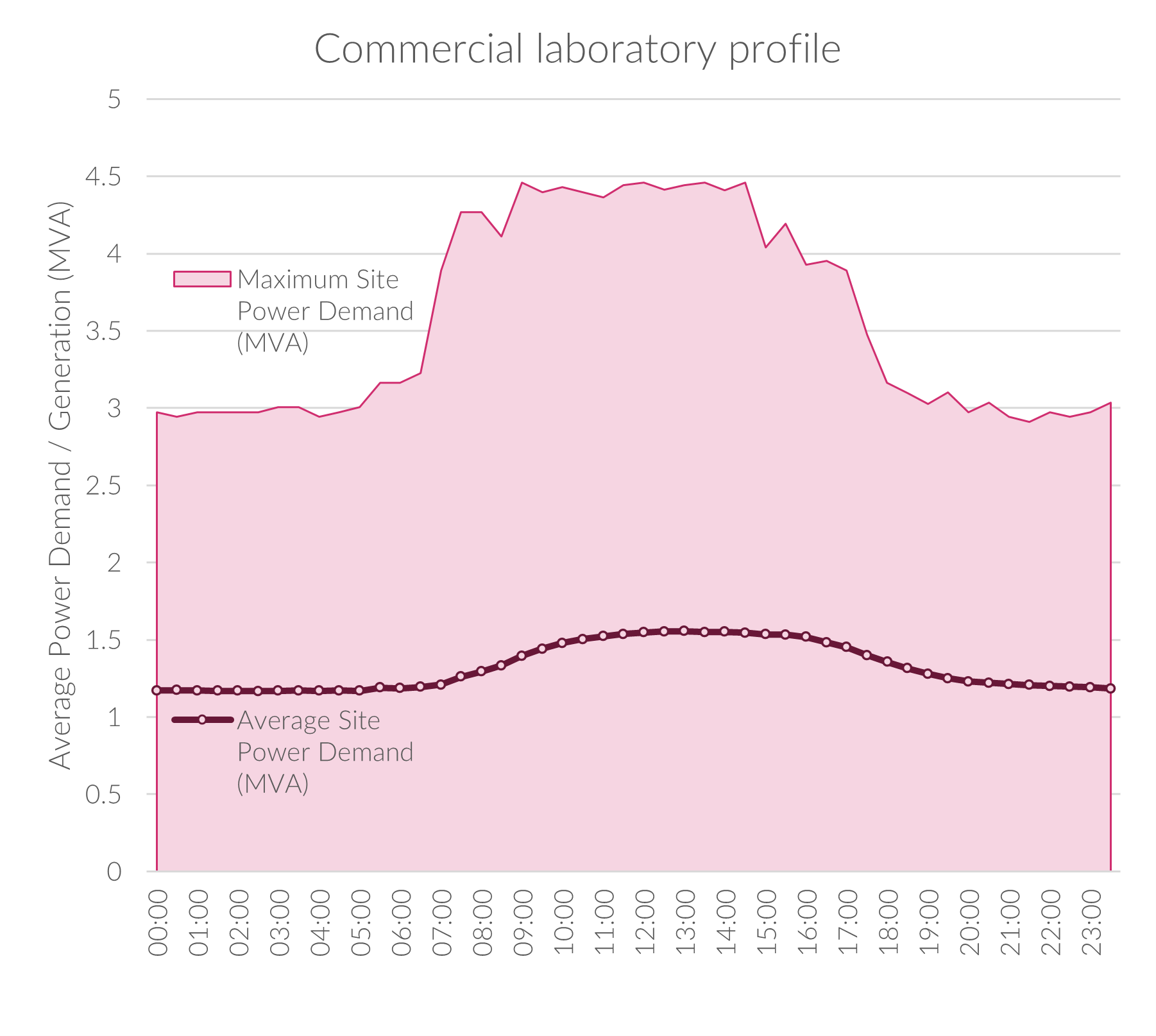Redefining laboratory energy intensity: part 2.
What does the data reveal?
Busting the myth.
Overdesign will allow for short power spikes, during peaks of high demand, but there are other ways that we could look to control these infrequent events. Understanding power demand and the peak load allows us to use scenario modelling methods to explore appropriate solutions to manage the peak demands.
Regular data (30-minute intervals) provides us with a greater understanding of the different energy needs of the overall building, especially as it is not reliant on a cruder diversified summation of a maximum demand calculation based upon a W/m2 power density. The final profile will depend on the tenant. However, we use database profiles for sites across the UK, and simulate for behaviour important for modelling typical power demand throughout the year. This provides the opportunity for smaller power densities to be used in the design. This could result in reduced grid power demand and reduce the risk surrounding network connection and associated network cost.
A significant impact.
Early indications show that actual power demand is significantly lower than the design metrics generally used for a science building. The impact could provide significant reductions to both capital and operational expenditures, through opportunities realised to reduce CAPEX for incoming power; central small power cabling or busbar; for central cooling, and shorter construction programs; and reduced OPEX through the life of the building with less plant to maintain.
Smaller central plant, with associated plant space, will provide an increased REVENUE through access to more lettable area, or smaller build costs.

Example of calculated site power demand against actual building meter reading, identifying significant diversity, resulting in significantly lower site power requirement.
Future trend impacts.
Science building design will always be influenced by the type of tenant or the capital funding that speculative developers bring, and over the last few years this has been a fast moving and fluid market. It will probably continue to be, we are seeing the ratio of laboratory to office space shifting towards more office space to accommodate predicting advances in AI and computing, along with facilities maintaining the UK mainstay of gene cell therapy research.
The question we all need to ask is should we continue along a steady non-progressive route; or be more emboldened, learn from existing data and allow clients to capitalise on the commercial advantages that this can bring?
We are at the forefront of a drive to greater understand how science building are really operated, often challenging the assumptions used to designed and commissioned them. We will use data to challenge preconceived design metrics. The opportunities to re-think laboratory design have real potential to be explored, looking to challenge preconceptions of what metrics are actually needed to define the services briefing scope.
We are starting by understanding the real power demand of science buildings, but we are not stopping there. Contact us to find out what we think is coming next.
Contributors:
Rob Templey – Associate Director within the Science and Research Group at Hoare Lea.
Jacques Le Van – Senior Associate within the Energy Economics Group at Hoare Lea.